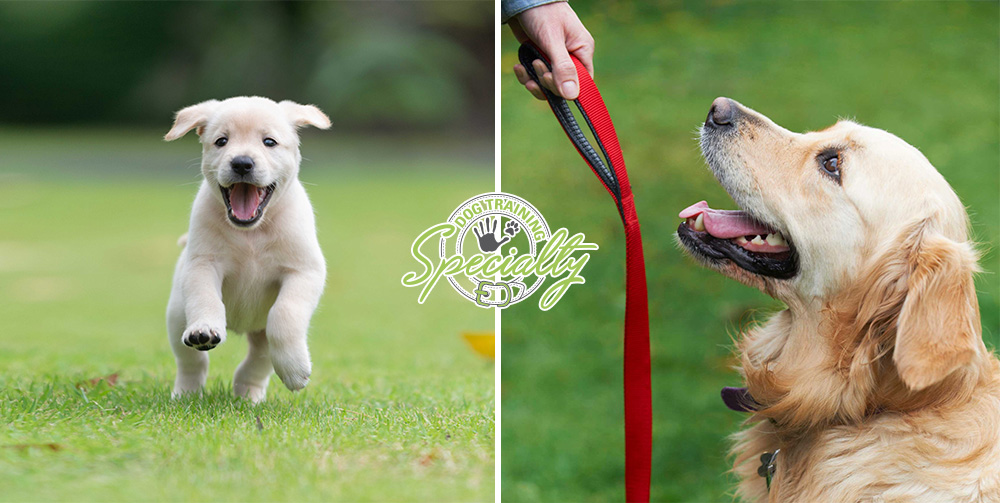Dog Training Charlotte NC: Your Course to a Well-Behaved Dog
Dog Training Charlotte NC: Your Course to a Well-Behaved Dog
Blog Article
Unlock Your Pet's Possible: Proven Pet Dog Training Techniques for Success
Efficient pet training is a nuanced procedure that pivots on understanding canine habits and using medically backed methods. By including favorable support, establishing clear commands, and focusing on socializing, pet dog proprietors can grow an efficient connection with their pet dogs.
Recognizing Pet Dog Actions
Understanding dog actions is vital for effective training and cultivating a positive relationship in between pets and their proprietors. A comprehensive grasp of canine body movement, vocalizations, and social interactions is critical for recognizing their demands and feelings. Pet dogs communicate largely through non-verbal signs; for instance, a wagging tail might show excitement, while pinned ears can signify anxiety or submission.

Furthermore, environmental elements play a significant function fit a pet dog's actions. Changes in regular, brand-new surroundings, or the existence of unfamiliar people can result in anxiety or anxiousness in canines. Acknowledging these triggers allows owners to mitigate damaging responses and establish ideal training approaches.
Eventually, a deep understanding of pet dog actions lays the foundation for effective training approaches, improving both habits and the total bond between the pet dog and its owner. dog training charlotte nc. This understanding is essential for fostering a well-adjusted, delighted canine friend
Positive Reinforcement Methods
Effective training counts heavily on favorable reinforcement methods, which have been shown to yield considerable cause forming preferred actions in dogs. This technique includes rewarding a pet dog for showing particular habits, therefore enhancing the possibility that these behaviors will be duplicated. Rewards can take numerous forms, including treats, praise, toys, or play, depending on what motivates the individual canine.

It is vital to progressively terminate benefits as the canine discovers the actions, transitioning to recurring reinforcement. This technique keeps the behavior over time while avoiding reliance on consistent rewards. By concentrating on positive reinforcement, instructors can grow a trusting partnership with their pet dogs, promoting a participating and healthy training environment that boosts general obedience and efficiency.
Establishing Regular Commands
An essential aspect of successful pet training is the establishment of constant commands. Consistency in commands is vital for efficient communication in between the pet dog and the instructor. When commands are uniform, canines find out to connect details words with preferred behaviors, which speeds up the training procedure and improves understanding.
To develop constant commands, it is essential that all member of the family use the same terminology and gestures. If one person utilizes "sit" while another says "sit down," it can develop complication for the pet. Select clear, unique words for commands and make sure every person associated with the pet dog's training abides by these selections.
Furthermore, repeating is vital. Strengthen commands with frequent technique, guaranteeing that the canine gets sufficient chances to react appropriately. When a dog successfully adheres to a command, prompt positive support ought to adhere to. This might be in the form of deals with, appreciation, or playtime, solidifying the connection between the action and the command.
Finally, hold your horses. Developing regular commands takes some time and effort. With devotion and clarity, you will certainly aid your pet dog create a solid understanding of expectations, ultimately resulting in a mannerly companion.
Socializing and Direct Exposure
Interacting socially a canine is crucial for fostering a certain and well-adjusted friend. This procedure entails revealing your canine to a variety of environments, people, and other pets to develop their social abilities and adaptability. Early socialization, ideally in between the ages of three to fourteen weeks, is vital, as it lays the foundation for a pet dog's future behavior.
During socializing, purpose to give positive experiences in various settings, such as parks, busy roads, and homes with various other family pets. Introduce your pet to numerous stimulations, including noises, sights, and scents, making sure that each experience is rewarding. This direct exposure helps reduce anxiety and anxiety, paving the method for a more resilient pet dog.
Involving in regulated team play sessions with various other pet dogs can additionally enhance social skills, instructing your pet dog proper communications and boundaries. cesar dog trainer Focusing on socialization will significantly contribute to your pet's general joy and behavior throughout their life.
Overcoming Common Educating Obstacles

Pet dogs may struggle to focus in unknown or busy setups. Progressively desensitize your dog to diversions by starting training Home Page in a quiet environment and gradually presenting more stimulations as they become skillful.
Additionally, behavior problems like jumping or too much barking can become irritating. Address these by educating alternate habits, such as sitting calmly when welcoming visitors. Consistency and patience are essential; strengthen preferred actions regularly and stay clear of scolding, which can lead to confusion.
Last but not least, identify that each pet dog is unique, and training timelines might vary. Dressmaker your approach to your pet's private requirements, and seek professional assistance if needed. With willpower and the appropriate methods, overcoming these challenges can cause a well-trained, happy canine companion.
Verdict
Finally, unlocking a canine's prospective demands an extensive method that integrates an understanding of canine habits, the application of favorable support methods, and the establishment of regular commands. Early socializing and direct exposure to varied atmospheres additionally improve a dog's flexibility and self-confidence. By addressing usual training obstacles with customized strategies and persistence, a unified and cooperative partnership in between pet and trainer can be fostered, ultimately leading to a well-behaved companion qualified of prospering in different scenarios.
Effective pet training is a nuanced procedure that hinges on recognizing canine actions and using medically backed techniques.Recognizing dog behavior is crucial for effective training and fostering a favorable connection between dogs and their proprietors.Efficient training counts heavily on favorable support techniques, which have been shown to produce substantial results in forming preferred go to website habits in pet dogs. When commands are consistent, canines discover to associate certain words with desired actions, which increases the training procedure and boosts understanding.
In final thought, opening a pet's possible demands a comprehensive strategy that integrates an understanding of canine behavior, the application of favorable reinforcement techniques, and the facility of regular commands.
Report this page